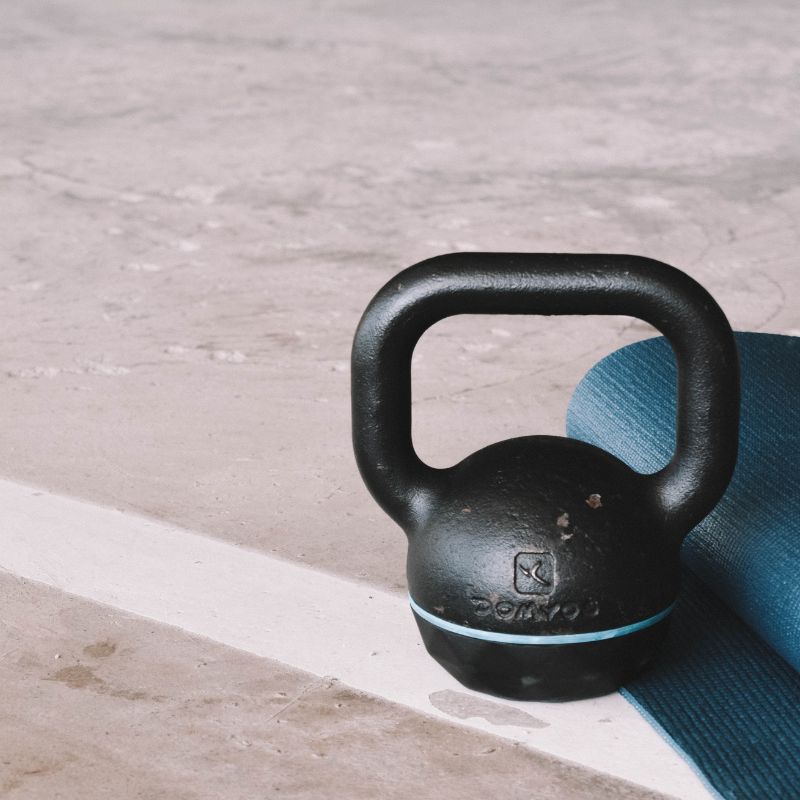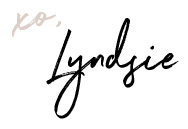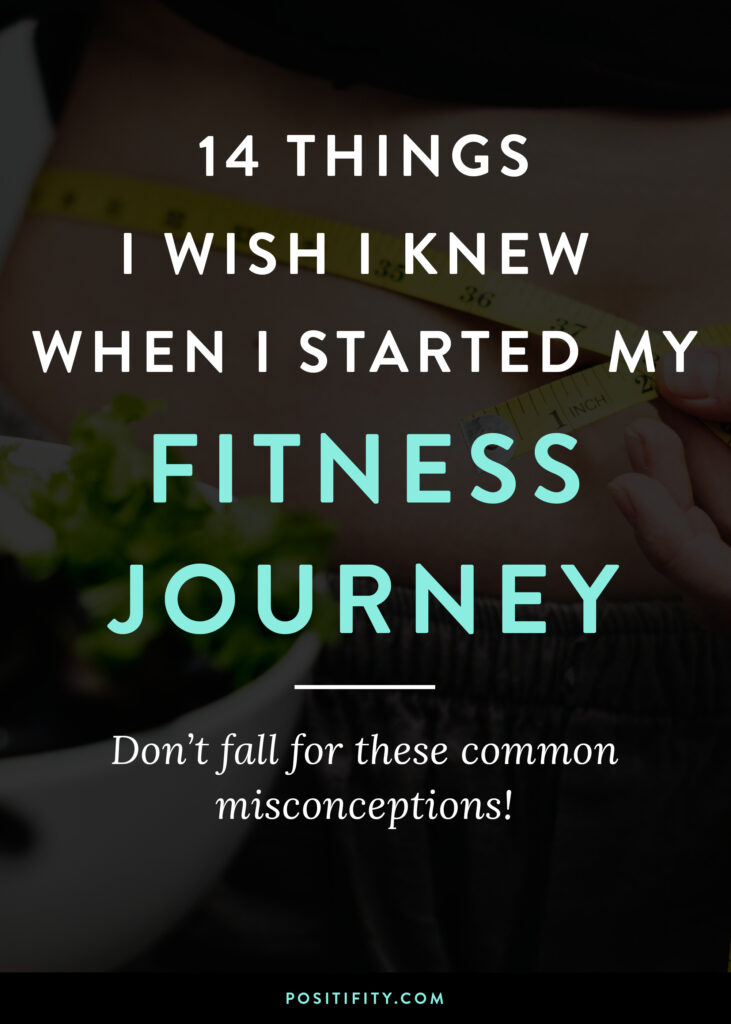On this blog, I share practical tips, tools, and strategies to help you reclaim and AMPLIFY your energy so you can banish burnout and start experiencing more clarity, freedom and flow!
hey!
Energy
Health
Productivity
Vision

Making a commitment to get fit can be completely overwhelming! With so much conflicting information out there, where do you even start?
Since beginning my fitness journey, I’ve learned a lot through trial and error, and what I didn’t know cost me a lot of time, money, and unintentional self-sabotage. I don’t want you to make the same mistakes.
That’s why today I’m sharing “14 Things I Wish I Knew When I Began My Fitness Journey”, in hopes that it will help you as you begin yours!
1. Proper form is WAY more important than how much weight you lift.
If there’s one thing I could go back and tell my young weightlifting self it would be to swallow my pride and focus more on nailing my form than on the number of plates on my barbell.
When you use more weight than you can properly handle you: 1) set yourself up for injury (a lesson I learned the hard way) and 2) actually sabotage your gains, in many cases.
When the muscle you’re targeting is too weak to lift the load it’s bearing, you experience a phenomenon called “synergistic dominance”, which means that secondary muscles will compensate to allow you to complete the movement. This can lead to ineffectively strengthening the target muscle and overtaxing the muscles picking up the slack.
2. Stop obsessing over supplements
As you dive into the world of fitness, you’re bound to be bombarded by influencers and marketers telling you about all of the latest health products and supplements that you just HAVE to have.
Unfortunately, the supplement industry is rife with shadiness and pseudo-science, making it difficult to discern what’s actually effective. Not to mention, the cost of supplements can add up quickly!
If you’re just starting out, don’t spend hours banging your head against a wall trying to figure out which supplements to take.
While they can definitely enhance your performance and results, the most important thing BY FAR is getting your diet and training right.
Before buying any supplement, I recommend that you look it up on Examine.com to see what scientific research has to say on its efficacy.
(All of this being said, there is one well-researched supplement that I swear by to support muscle gain, and that is creatine monohydrate. I like this one by Thorne Research but there are several cheaper alternatives out there!).
3. Lifting weights will not make you “bulky”
If you’re afraid that lifting is going to make you look too “masculine”, trust me – you’re not going to get there by accident.
Putting on that level of muscle mass takes a LOT of intention and effort, over a relatively long period of time so if you’re just starting out, there’s really nothing to worry about.
You won’t go to the gym for a week or two and then suddenly wake up one morning looking like the Hulk.
4. You’re going to feel really awkward about certain exercises… Do them anyway
Doing any unfamiliar exercise for the first time might make you feel so awkward or silly that you feel tempted to skip them altogether. (Lookin’ at you hip thrusts 👀)
Don’t let this discomfort prevent you from doing exercises that are critical to building your goal physique.
The only way to get past it is to show up, push through the discomfort and realize that hey, it wasn’t actually as bad or awkward as you thought.
Accept that discomfort is part of the process of learning ANYTHING new and do it anyway. It DOES get better and your body will thank you for it.
5. Hip thrusts: the ultimate booty-building exercise
(Not sure what a hip thrust is? Don’t worry, I got you >> Here’s a quick video tutorial.)
If you’ve been following traditional “bro science,” you’ve probably heard that squats and deadlifts are the ultimate lower body exercises.
While they’re both great movements in their own right, neither of them compare to the glute activation (aka booty gains) you get from hip thrusts.
Hip thrusts are a staple movement in my workout routine, and I wish I had started doing them even earlier in my fitness journey.
If you’re trying to build a booty, these are a game-changer!
6. Many “health” foods aren’t actually that healthy
At the beginning of my fitness journey when I was still a college student, I decided I needed to clean up my eating, and so I used to survive on things like Special K brownies, Pop Chips, Lean Cuisines, and Walden Farm’s 0-calorie syrup.
Not exactly the diet of champions…
Many of the health benefits touted on the boxes of these foods were nothing more than clever marketing.
While there were definitely less calories in these items than their alternatives, I was still eating a TON of processed foods.
Thank god I finally learned that there’s a lot more to healthy eating than calories…
How your food is produced is also REALLY important.
Now I try to stick to whole, unprocessed foods (ideally organic) and limit added sugars.
7. Rest days are not lazy. Rest days are essential.
When I first started taking weightlifting seriously, I prided myself on the fact that I was team #nodaysoff.
I seemed to have this fear that if I missed one day, I’d somehow completely fall off the rails and lose all my progress.
Be better than me, plz 🙏
If you’re pushing yourself hard, rest days are ESSENTIAL for your muscles to repair and rebuild.
Going to the gym became so ingrained in my daily routine that it was hard for me not to go.
If this sounds like you, I recommend taking “active” rest days, where you do light cardio, yoga, or something minimally taxing on your body so you can still get some movement in while giving yourself a chance to recover.
8. Weight is not a good indictor of your progress in a resistance-training program
If the primary goal of your workout program is weight-loss, then the scale can be a useful tool to monitor your progress.
However, if you’re implementing a resistance training program with the goal of gaining muscle mass, it’s not going to do much for you.
Since muscle is more dense than fat, you may be making tremendous strides forward, but actually gain weight.
The number on the scale doesn’t take into account how your body composition is changing or differentiate between lean mass (muscle) and fat mass.
Taking progress photos, keeping an exercise log that allows you to observe strength gains over time, or recording monthly measurements are much more effective ways to track your progress for this type of training program. (And if you really want to take your progress monitoring to the next level, you can also consider getting a DEXA scan once or twice per year.)
9. Make sure you’re eating enough food… (especially protein!)
There seems to be this myth floating around that in order to get fit you have to adopt a super restrictive diet.
Not only is this unsustainable and a set-up for failure, but it can also be dangerous and prevent you from making the progress you’re working so hard for.
Building muscle requires consuming more calories than you burn.
If you’ve cleaned up your eating and your diet consists primarily of plants and lean poultry, then you may have to consume a larger quantity of food than you’re used to to hit your macro goals (hey, you’ll never hear me complain about having to eat more!).
The most important macronutrient when it comes to building muscle is protein. The generally accepted rule of thumb is to aim for 1 gram of protein per pound of bodyweight.
So if you weigh 130 pounds, you’ll want to consume 130 grams of protein throughout the day.
If you find this challenging, supplementing with protein shakes can be helpful!
10. … But also realize that “bulking” doesn’t require as many calories as you might think
Building muscle requires being in a caloric surplus, but some people take this as an invitation to eat all the thingz.
If you’re eating because you’re truly hungry, then go for it!
But if you think that you need to consume excessive amounts of calories to put on some muscle, well… that’s just not true.
The ideal number of additional calories to increase muscle mass is 250 – 500 calories above your maintenance levels.
Your “maintenance level” is the amount of calories you use to complete the activities of one day.
You can calculate your TDEE, or total daily energy expenditure, using THIS calculator.
11. A longer workout doesn’t equal a better workout
When I first started taking weightlifting seriously, I’d be in the gym 2 hours a day, 7 days a week… Not wise, my friends.
In fact, training this way can actually cause you to LOSE muscle mass.
This is because, as you train, the level of cortisol – a stress hormone that helps regulate metabolism and energy – in your body begins to rise, signaling to your body to break down muscle protein as a source of energy.
When exactly this begins to occur depends on the intensity of your workout, but if your weight training is regularly taking 2+ hours, then you are likely a) not training hard enough or b) overtraining and inadvertently causing a loss of muscle tissue. No bueno.
For most people, hypertrophy training (the fancy pants way of saying training to increase your muscle size), the sweet spot of training hard enough to see maximum results without overdoing it is a 60-90 minute workout.
12. Build your mind-muscle connection
When training, you shouldn’t just be going through the motions, only focused on cranking out a certain number of reps or thinking about what you need to buy at the grocery afterwards.
All movement begins with a signal sent by your brain telling your muscles to contract.
The mind-muscle connection refers to intentionally bringing your focus to the contraction of your target muscle during an exercise. Many studies have shown that this focused concentration results in greater neural activation.
Improving the communication between your brain and body allows for a better quality muscle contraction and ultimately a better quality workout.
So with each rep that you complete, be sure that you’re really focusing on moving the weight with the muscle you intend to and feeling that contraction.
I’ve found it really helpful to simply lightly place my hand on the muscle I’m trying to activate to really help myself FEEL that contraction each rep.
13. Sometimes the best way to progress isn’t adding more weight
The most obvious way to “progress” in the gym is to continually increase the amount of weight you’re lifting as you become stronger.
However, it’s important to remember that there are other ways to make an exercise more challenging.
You can increase the intensity of your workout by altering the number of reps and sets you complete, switching up the tempo to increase time under tension, taking shorter rest periods, and/or adding supersets or circuits to your training.
For example, I often like to take down the weight a bit for a given exercise and focus on completing the eccentric (or lowering) phase of the exercise, nice and slooooow. This maximizes the time that the muscle is under tension, allowing for greater growth.
Drop sets are another secret weapon I wish I would’ve incorporated from the start.
With drop sets, you use a challenging weight to complete an exercise as usual but when you reach your target number of reps, you reduce the weight and immediately continue lifting until you reach failure at that weight, continuing the process until your muscles are tapped out.
14. Be careful who you take fitness advice from
When I first got into fitness, I – naturally 🤦🏻♀️ – turned to Instagram for workout ideas and advice.
As I began to learn more about fitness through my own experience, getting my certifications, and reading published research, it became more and more apparent how many influencers were out there, both knowingly and unknowingly, giving bad workout advice or pushing ineffective or unhealthy products
(Example A – when I purchased and suffered through wearing not one, but TWO waist trainers because all of the fitness gurus were raving about them *facepalm*).
While platforms like Instagram and TikTok can be a great tool for inspiration and new exercise ideas, make sure that the people you are following have your best interest in mind and are qualified to be giving you advice.
Also be sure to conduct your own research before buying any products or trying any exercises that look cool on the ‘gram but could be potentially dangerous to your long-term health.
NOW I WANT TO HEAR FROM YOU!
What do you wish you would’ve known when you started your fitness journey? If you’re just starting out, what is your biggest source of confusion? Let me know in the comments below!

LIKE THIS POST? PIN IT FOR LATER.

Related Posts
On this blog, I share practical tips, tools, and strategies to help you reclaim and AMPLIFY your energy so you can banish burnout and start experiencing more clarity, freedom and flow!
hey!
Energy
Health
Productivity
Vision
READY TO TAKE YOUR HUMAN DESIGN EXPERIMENT TO THE NEXT LEVEL?
Download Your FREE 2025
Human Design Transit Calendar & Guide
BE THE FIRST TO KNOW WHEN NEW RESOURCES DROP.
CONTACT
GET YOUR CHART
FREE TRANSIT GUIDE
COPYRIGHT © 2025 OPTIMIZE FOR FREEDOM, LLC. All rights reserved. LEGAL.